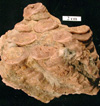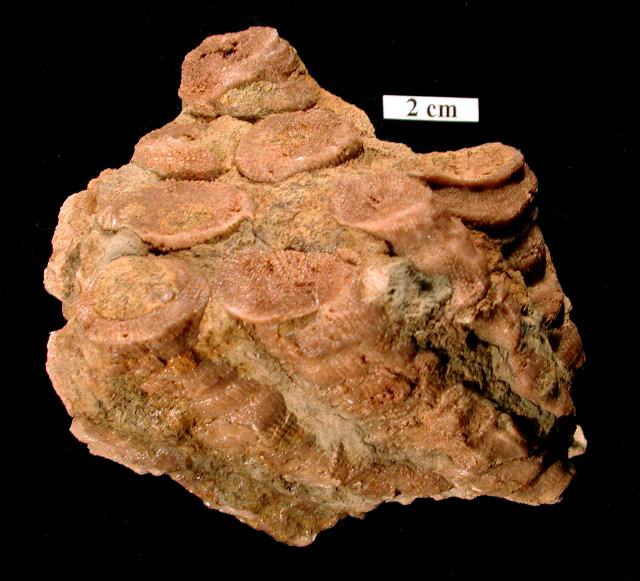A Devonian day
The fish of the Devonian Period experienced rather short days. We know that the Devonian year had 400 days, making each day only 22 hours long.
 (72 kb) This just goes to show that nothing is constant on Earth, not even the length of a day! Just as continents move and change direction, the speed at which our planet rotates also changes over time.
(72 kb) This just goes to show that nothing is constant on Earth, not even the length of a day! Just as continents move and change direction, the speed at which our planet rotates also changes over time.
How is this possible? It is really the fault of the Moon, our celestial companion. Since it formed 4.2 billion years ago (4.2 Ga), the Moon has driven the tides on our planet. The Moon’s gravitational pull attracts great masses of water toward it while in orbit around us. As the Earth turns eastward, the tides move westward, and this phenomenon imperceptibly slows the rotation of our planet by 0.0016 seconds per century!
Our planet was therefore turning faster in the past, such that each year consisted of more, but shorter, days. Though the features of the Earth may change, the laws of physics are constant. In a binary system like the Earth and Moon, if one of the two companions loses momentum, the other must gain momentum. Over time, as Earth’s rotation slows, the orbital velocity of the Moon increases, forcing it to gradually recede away from us. Using lasers, we have confirmed this movement and found it to be 3.8 centimetres per year. This may seem too small to make a real difference, but when added up over hundreds of millions of years, we can calculate that the Moon is now twice as far from Earth as it was during Devonian time. As a consequence, Devonian tides were up to seven times larger than today’s tides.
These physics calculations have been verified by paleontological discoveries. One line of evidence comes from corals. Corals, both living and fossilized, are animals that live inside little cups of calcium carbonate (calcite; CaCo3) that they themselves secrete. The coral “skeleton” grows because the animals deposit calcite every day they are alive. The activity temporarily stops at night because the animals live symbiotically with single-celled algae that need light to function. The daily layers are visible under a microscope, making it possible to count days, somewhat like counting tree rings to determine the passage of years.
Species that live in temperate waters are subjected to seasonal variations in temperature, so winter growth is slower and the marks farther apart. Years are therefore easily distinguished among the series of growth lines. A modern coral would show us years consisting of 365 lines.
Coral fossils living 400 million years ago (400 Ma) in the Early Devonian display years of 400 lines, and thus 400 days, proving that the Earth did indeed turn faster at that time. For corals that lived during the Upper Carboniferous (300 Ma), there are approximately 380 lines each year. The fossil record thus clearly demonstrates that Earth’s rotation has gradually slowed over time, and that it is still slowing down today.

 (72 kb) This just goes to show that nothing is constant on Earth, not even the length of a day! Just as continents move and change direction, the speed at which our planet rotates also changes over time.
(72 kb) This just goes to show that nothing is constant on Earth, not even the length of a day! Just as continents move and change direction, the speed at which our planet rotates also changes over time.How is this possible? It is really the fault of the Moon, our celestial companion. Since it formed 4.2 billion years ago (4.2 Ga), the Moon has driven the tides on our planet. The Moon’s gravitational pull attracts great masses of water toward it while in orbit around us. As the Earth turns eastward, the tides move westward, and this phenomenon imperceptibly slows the rotation of our planet by 0.0016 seconds per century!
Our planet was therefore turning faster in the past, such that each year consisted of more, but shorter, days. Though the features of the Earth may change, the laws of physics are constant. In a binary system like the Earth and Moon, if one of the two companions loses momentum, the other must gain momentum. Over time, as Earth’s rotation slows, the orbital velocity of the Moon increases, forcing it to gradually recede away from us. Using lasers, we have confirmed this movement and found it to be 3.8 centimetres per year. This may seem too small to make a real difference, but when added up over hundreds of millions of years, we can calculate that the Moon is now twice as far from Earth as it was during Devonian time. As a consequence, Devonian tides were up to seven times larger than today’s tides.
These physics calculations have been verified by paleontological discoveries. One line of evidence comes from corals. Corals, both living and fossilized, are animals that live inside little cups of calcium carbonate (calcite; CaCo3) that they themselves secrete. The coral “skeleton” grows because the animals deposit calcite every day they are alive. The activity temporarily stops at night because the animals live symbiotically with single-celled algae that need light to function. The daily layers are visible under a microscope, making it possible to count days, somewhat like counting tree rings to determine the passage of years.
Species that live in temperate waters are subjected to seasonal variations in temperature, so winter growth is slower and the marks farther apart. Years are therefore easily distinguished among the series of growth lines. A modern coral would show us years consisting of 365 lines.
Coral fossils living 400 million years ago (400 Ma) in the Early Devonian display years of 400 lines, and thus 400 days, proving that the Earth did indeed turn faster at that time. For corals that lived during the Upper Carboniferous (300 Ma), there are approximately 380 lines each year. The fossil record thus clearly demonstrates that Earth’s rotation has gradually slowed over time, and that it is still slowing down today.
Site map | Feedback | Links | Sources | Credits
A Devonian day
<< Climate | Life in crisis >>

Title: Cylindrophyllum
Author: Parc national de Miguasha
Sources: Parc national de Miguasha
Year: 2001
Description:
A colony of the rugose coral Cylindrophyllum. Cylindrophyllum were present in the Gaspé region at the beginning of Middle Devonian time. This specimen comes from the Battery Point Formation in central Gaspé.


